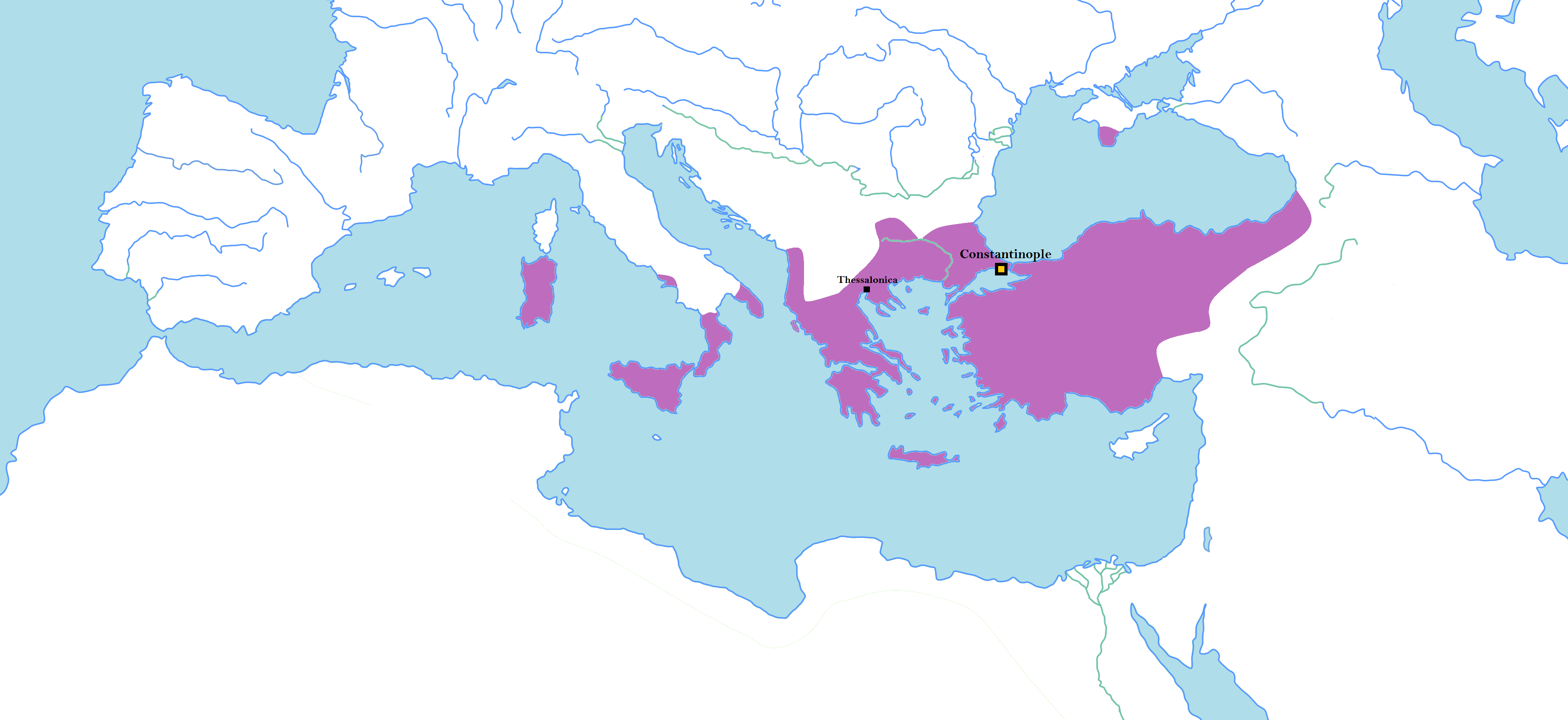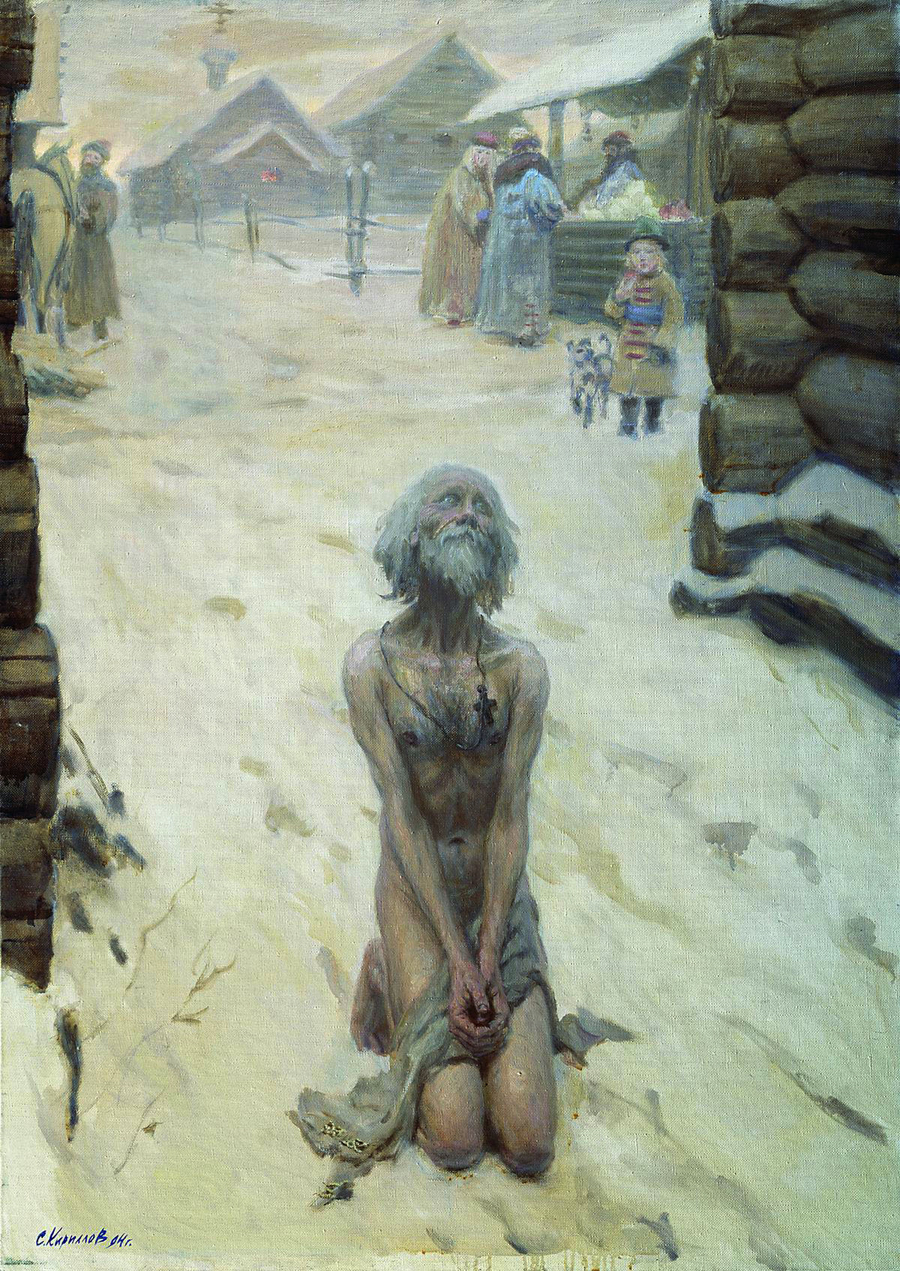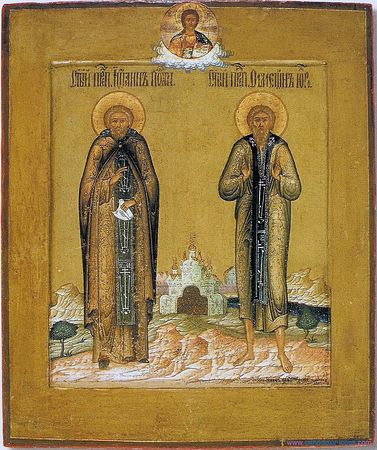|
July 23 (Eastern Orthodox Liturgics)
July 22 - Eastern Orthodox Church calendar - July 24 All fixed commemorations below are celebrated on ''August 5'' by Old Calendar. For July 23rd, Orthodox Churches on the Old Calendar commemorate the Saints listed on ''July 10''. Saints * Righteous Hannah (Anna), mother of the Prophet Samuel (1100 BC)July 23/August 5 Orthodox Calendar (PRAVOSLAVIE.RU).August 5 / July 23 HOLY TRINITY RUSSIAN ORTHODOX CHURCH (A parish of the Patriarchate of Moscow). ''(see also: |
Sabine Baring-Gould
Sabine Baring-Gould ( ; 28 January 1834 – 2 January 1924) of Lew Trenchard in Devon, England, was an Anglican priest, hagiographer, antiquarian, novelist, folk song collector and eclectic scholar. His bibliography consists of more than 1,240 publications, though this list continues to grow. His family home, the manor house of Lew Trenchard, near Okehampton, Devon, has been preserved as he had it rebuilt and is now a hotel. He is remembered particularly as a writer of hymns, the best-known being "Onward, Christian Soldiers", "Sing Lullaby", and "Now the Day Is Over". He also translated the carol "Gabriel's Message" from the Basque language to English. Origins Sabine Baring-Gould was born in the parish of St Sidwells, St Sidwell, Exeter, on 28 January 1834. He was the eldest son and heir of Edward Baring-Gould (1804–1872), lord of the manor of Lew Trenchard, a Justice of the Peace and Deputy Lieutenant of Devon, formerly a lieutenant in the Madras Army#Madras Light Cavalry, M ... [...More Info...] [...Related Items...] OR: [Wikipedia] [Google] [Baidu] |
Liborius Of Le Mans
Liborius of Le Mans (c. 348–397) was the second Bishop of Le Mans. He is the patron saint of the cathedral and archdiocese of Paderborn in Germany. The year of his birth is unknown; he died in 397, reputedly on 23 July. Le Mans and Paderborn As for other fourth-century saints, little is known of his life. He was a Gaul, influenced by Latin culture. He is said to have been Bishop of Le Mans for 49 years. He built some churches in its neighbourhood, an indication that his missionary activity was limited to the Gaul of his time. He is said to have ordained, in the course of 96 ordinations, 217 priests and 186 deacons. Saint Martin of Tours assisted him when he was dying. He was buried in the Apostle Basilica of Le Mans, beside his predecessor, Julian, the founder of the bishopric. Miracles are said to have occurred at his tomb. In 835 Bishop Aldrich placed some relics of his body into an altar in the cathedral, and in the following year, on the instructions of Emperor Louis the Pi ... [...More Info...] [...Related Items...] OR: [Wikipedia] [Google] [Baidu] |
August 5 (Eastern Orthodox Liturgics)
August 4 - Eastern Orthodox liturgical calendar - August 6 All fixed commemorations below are observed on ''August 18'' by Eastern Orthodox Churches on the Old Calendar. For August 5, Orthodox Churches on the Old Calendar commemorate the Saints listed on ''July 23''. Feasts * Forefeast of the Transfiguration of Jesus.August 5 / August 18 Orthodox Calendar (PRAVOSLAVIE.RU). Saints * Hieromartyrs Antherus (236) and Fabian (''Fabianus'') (250), Popes of Rome. * Martyr Pontius, at Cimella in Gaul (257)[...More Info...] [...Related Items...] OR: [Wikipedia] [Google] [Baidu] |
Karpasia (town)
Karpasia ( grc, Καρπάσεια and Καρπασία), Latinized as Carpasia, and also known as Karpasion (sometimes mistaken for Karpathos), was an ancient town in Cyprus, situated in the northern shore of the Karpas Peninsula, at a distance of 3 km from the modern town of Rizokarpaso. According to tradition, it was founded by the Phoenician king Pygmalion of Tyre. It had a harbour, whose moles remain visible to this day. According to archaeological evidence, the earliest possible date for the foundation of the town is the 7th century BC. It was first mentioned in literature in 399 BC. The town was mentioned by the writers of antiquity, including Strabo. The city is also mentioned in the Hellenica Oxyrhynchia, which is papyrus fragments in Greek with the history of ancient Greece. In 306 BC, the town was the site of landing for Demetrius I of Macedon, whose forces stormed Carpasia and the neighbouring town of Urania, before proceeding to Salamis. The architectural style as w ... [...More Info...] [...Related Items...] OR: [Wikipedia] [Google] [Baidu] |
Nikephoros I
Nikephoros I or Nicephorus I ( gr, Νικηφόρος; 750 – 26 July 811) was Byzantine emperor from 802 to 811. Having served Empress Irene as '' genikos logothetēs'', he subsequently ousted her from power and took the throne himself. In reference to his career before becoming emperor, he is sometimes surnamed "the Logothete" (ὁ Λογοθέτης) and "Genikos" or "Genicus" (ὁ Γενικός). Nikephoros pursued wars against the Arabs and Bulgarians, with mixed results; while invading Bulgaria he was defeated and killed at the Battle of Pliska. Background Sources outside the Byzantine context, including Michael the Syrian, al-Tabari, and Mas'udi, preserve the tradition that Nikephoros was of Ghassanid Arab origin. al-Tabari claims that he derived this information from Byzantine sources, but no surviving Byzantine chronicle makes explicit mention of the emperor's ethnic background. The modern scholar Paul Julius Alexander suggests that al-Tabari did transmit informat ... [...More Info...] [...Related Items...] OR: [Wikipedia] [Google] [Baidu] |
Fool-for-Christ
Foolishness for Christ ( el, διά Χριστόν σαλότητα, cu, оуродъ, юродъ) refers to behavior such as giving up all one's worldly possessions upon joining an ascetic order or religious life, or deliberately flouting society's conventions to serve a religious purpose—particularly of Christianity. Such individuals have historically been known as both "holy fools" and "blessed fools". The term "fool" connotes what is perceived as feeblemindedness, and "blessing, blessed" or "holy" refers to innocence in the eyes of God.Frith, Uta. (1989) Autism: The Elegant Enigma. Malden, MA: Blackwell Publishing. The term ''fools for Christ'' derives from the writings of Saint Paul (apostle), Saint Paul. Desert Fathers and other saints acted the part of Holy Fools, as have the ''yurodivy'' (or iurodstvo) of Eastern Orthodox asceticism. Fools for Christ often employ shocking and unconventional behavior to challenge accepted norms, deliver prophecies, or to mask their piety ... [...More Info...] [...Related Items...] OR: [Wikipedia] [Google] [Baidu] |
Simeon The Holy Fool
Simeon the Holy Fool (Abba Simeon, Saint Simeon Salos or Saint Simeon Salus, el, Συμεών (ο δια τον Χριστόν) Σαλός) was a Christian monk, hermit and saint of Byzantine-Syrian origin, who lived in the sixth century AD. He is venerated by the Eastern Orthodox Church and Roman Catholic Church as one of the first "fools for Christ". It is claimed that he simulated madness in order not to be venerated for his social deeds, dragging a dead dog around, throwing nuts at women, and generally acting like an imbecile. On the other hand, he may well have been mad. Biography The dates of Simeon's life are not clear. Evagrius Scholasticus makes him a contemporary of the emperor Justinian I, while Leontios of Neapolis places his life in the reign of Maurice. Reportedly born in Edessa, Simeon lived there, unmarried, with his old mother. At the age of 20 years Simeon took monastic vows in the monastery of Abba Gerasimus in Syria, along with his friend and fellow ascetic Jo ... [...More Info...] [...Related Items...] OR: [Wikipedia] [Google] [Baidu] |
Chaldia
Chaldia ( el, Χαλδία, ''Khaldia'') was a historical region located in the mountainous interior of the eastern Black Sea, northeast Anatolia (modern Turkey). Its name was derived from a people called the ''Chaldoi'' (or ''Chalybes'') that inhabited the region in antiquity. Chaldia was used throughout the Byzantine period and was established as a formal theme, known as the Theme of Chaldia (Greek: θέμα Χαλδίας), by 840. During the Late Middle Ages, it formed the core of the Empire of Trebizond until its fall to the Ottoman Empire in 1461. Anthony Bryer traces the origin of its name not to Chaldea, as Constantine VII had done, but to the Urartian language, for whose speakers Ḫaldi was the Sun God. Bryer notes at the time of his writing that a number of villages in the Of district were still known as "Halt". Other scholars, however, reject the Urartian connection. Χάλυψ, the tribe's name in Greek, means "tempered iron, steel", a term that passed into Lati ... [...More Info...] [...Related Items...] OR: [Wikipedia] [Google] [Baidu] |
Lycia
Lycia (Lycian language, Lycian: 𐊗𐊕𐊐𐊎𐊆𐊖 ''Trm̃mis''; el, Λυκία, ; tr, Likya) was a state or nationality that flourished in Anatolia from 15–14th centuries BC (as Lukka) to 546 BC. It bordered the Mediterranean Sea in what is today the Provinces of Turkey, provinces of Antalya Province, Antalya and Muğla Province, Muğla in Turkey as well some inland parts of Burdur Province. The state was known to history from the Late Bronze Age records of ancient Egypt and the Hittite Empire. Lycia was populated by speakers of the Luwian language group. Written records began to be inscribed in stone in the Lycian language (a later form of Luwian) after Lycia's involuntary incorporation into the Achaemenid Empire in the Iron Age. At that time (546 BC) the Luwian speakers were decimated, and Lycia received an influx of Persian speakers. Ancient sources seem to indicate that an older name of the region was Alope ( grc, Ἀλόπη}, ). The many cities in Ly ... [...More Info...] [...Related Items...] OR: [Wikipedia] [Google] [Baidu] |
Fonds Coislin
Fonds Coislin (french: Le fonds Coislin) is a collection (or fonds) of Greek manuscripts acquired by Pierre Séguier, but named after Henri-Charles de Coislin, its second owner. It is now held in the National Library of France, as one of three fonds of Greek manuscripts: ''fonds grec'', ''fonds Coislin'', and ''supplément grec''. History of collection The majority of these manuscripts were collected between 1643 and 1653, by Père Athanase the Rhetor, who bought them for Pierre Séguier (1588–1672), chancellor of France from 1635. Athanase bought the manuscripts in Cyprus, Constantinople, Mount Athos, and in other territories bordering the northern and western Aegean. The collection contains almost 400 manuscripts. Athanase collected more than 300 manuscripts (probably 358) personally. After Séguier's death, all this collection was inherited by his grandson, Henri-Charles de Coislin (1664–1732), bishop of Metz. He gave it to the Benedictine monks of Saint-Germain-des-Pr� ... [...More Info...] [...Related Items...] OR: [Wikipedia] [Google] [Baidu] |
Bishop Of Rome
A bishop is an ordained clergy member who is entrusted with a position of authority and oversight in a religious institution. In Christianity, bishops are normally responsible for the governance of dioceses. The role or office of bishop is called episcopacy. Organizationally, several Christian denominations utilize ecclesiastical structures that call for the position of bishops, while other denominations have dispensed with this office, seeing it as a symbol of power. Bishops have also exercised political authority. Traditionally, bishops claim apostolic succession, a direct historical lineage dating back to the original Twelve Apostles or Saint Paul. The bishops are by doctrine understood as those who possess the full priesthood given by Jesus Christ, and therefore may ordain other clergy, including other bishops. A person ordained as a deacon, priest (i.e. presbyter), and then bishop is understood to hold the fullness of the ministerial priesthood, given responsibility b ... [...More Info...] [...Related Items...] OR: [Wikipedia] [Google] [Baidu] |



.jpg)

